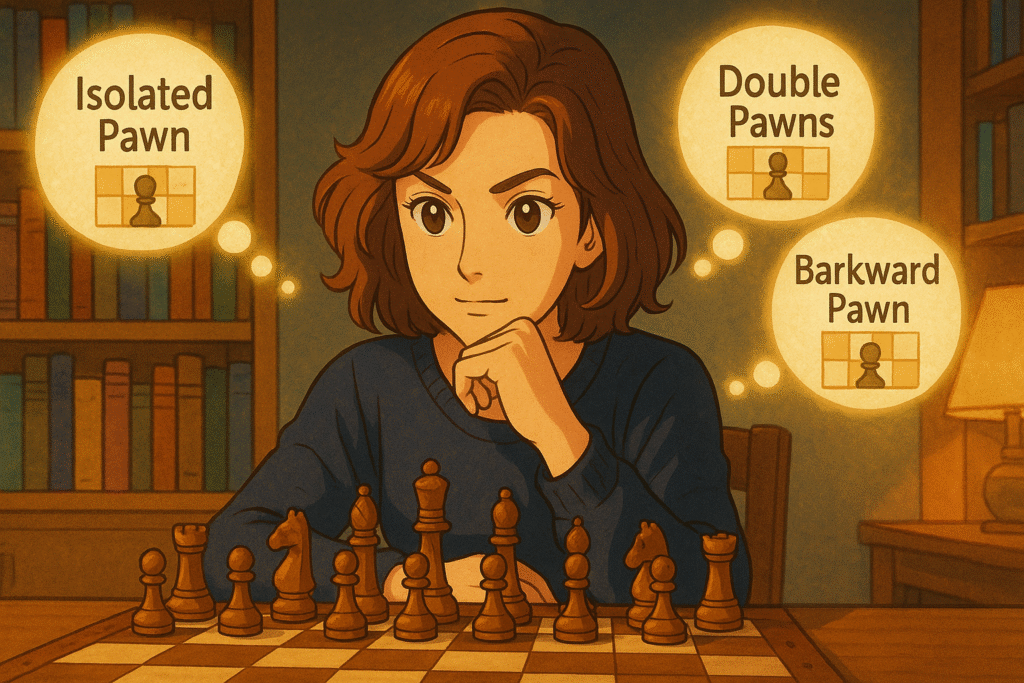
Introduction
Your pawn structure often determines strategic plans. Neglecting pawn weaknesses can leave lasting targets, even if you out-calculate your opponent. Below are three common “bad pawn” formations—isolated, doubled, and backwards—and how to handle them.
1. Isolated Pawn
What It Is: A pawn with no friendly pawns on adjacent files.
Why It’s Weak:
- Must be defended by pieces, tying them down.
- In endgames, cannot be backed up by other pawns—easy to blockade and attack.
How to Exploit/Oversee: - If your opponent has one, exchange minor pieces and blockade it (e.g., knight on d5 or d4). Then pile rooks and bishops onto the file.
- If you have one, keep enough pieces on the board for active play—use it to open lines and generate tactics before trading off.
2. Doubled Pawns
What It Is: Two pawns of the same colour on one file (usually after a recapture).
Why It’s Weak:
- Reduced mobility—one pawn blocks the other.
- The lower pawn becomes a target on a half-open file.
How to Exploit/Oversee: - If your opponent has doubled pawns, occupy the half-open file with a rook and pressure the backwards pawn. Exchange when it favours you.
- If you have doubled pawns, activate your pieces via that half-open file (e.g., rooks on the adjacent file). Seek counterplay—perhaps push or trade to create a passed pawn.
3. Backward Pawn
What It Is: A pawn that sits behind its neighbour (s) and cannot advance safely, typically on a half-open file.
Why It’s Weak:
- A permanent target; the opponent can build a blockade and invade.
- Restricts your own pieces, since they must defend it, and weakens nearby squares (e.g., a knight outpost).
How to Exploit/Oversee: - If your opponent has one, trade pieces and place a knight in front (blockade). Use rooks on the half-open file to intensify pressure.
- If you have one, look for piece exchanges to reduce attacking forces. Create counterplay elsewhere—advance pawns on the opposite flank or launch active piece manoeuvres.
Conclusion
Spot these pawn weaknesses early. If your opponent has them, exchange pieces and blockade or target those pawns. If you incur them, strive for active piece play, trade when advantageous, and generate counterplay before the weaknesses become fatal. Good pawn structure is the cornerstone of sound plans—keep these tips in mind to avoid long-term liabilities.